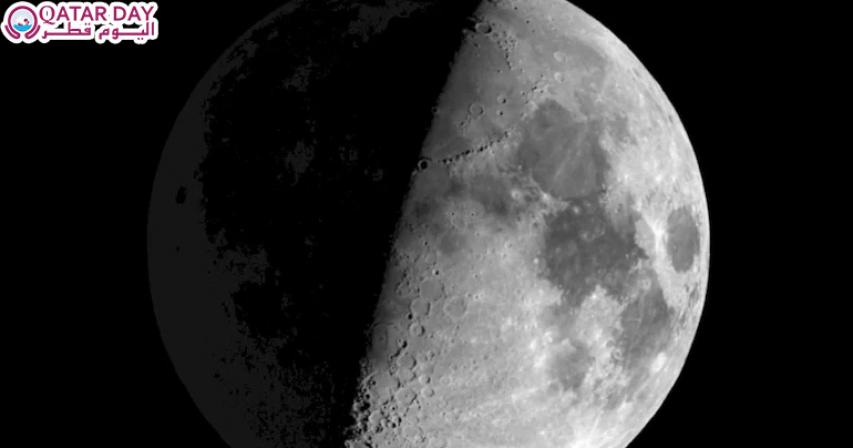Nasa's SOFIA telescope has confirmed the presence of water on the moon's surface. This discovery indicates that "water may be distributed across the surface and not limited to cold, shadowed places". The ice-rich areas have been found near the moon's north and south poles.
Announcing a new "exciting discovery" about Moon, the National Aeronautics and Space Administration (Nasa) said that its mission, SOFIA, has confirmed the presence of water molecules in Clavius Crater, one of the largest craters visible from Earth on the lunar surface. This crater is located in the Moon's southern hemisphere. Moreover, this discovery indicates that "water may be distributed across the surface and not limited to cold, shadowed places".
"NASA's Stratospheric Observatory for Infrared Astronomy [SOFIA] has confirmed, for the first time, water on the sunlit surface of the Moon. This discovery indicates that water may be distributed across the lunar surface, and not limited to cold, shadowed places," Nasa said.
In one of its tweets, Nasa said: "Water molecules were found in Clavius Crater, one of the largest craters visible from Earth on the Moon!"
BUT HOW MUCH WATER HAS BEEN FOUND ON MOON?
Nasa says that the Sahara desert has 100 times the amount of water than what SOFIA detected in the lunar soil.
"Data from this location reveal water in concentrations of 100 to 412 parts per million - roughly equivalent to a 12-ounce bottle of water - trapped in a cubic meter of soil spread across the lunar surface," Nasa said.
While previous observations have indicated millions of tons of ice in the permanently shadowed craters of the moon's poles, a pair of studies in the journal Nature Astronomy take the availability of lunar surface water to a new level.
The new studies suggest that there may be far more water on the Moon than once thought. They indicated that water could be even more widespread, including the first confirmation that it is present even in easier-to-access sunlit areas.
More than 15,400 square miles (40,000 square kilometres) of lunar terrain can trap water in the form of ice, said a team led by the University of Colorado's Paul Hayne. That's 20 per cent more area than previous estimates, scientists said.
These ice-rich areas have been found near the moon's north and south poles. Temperatures are so low in these so-called cold traps - minus 261 degrees Fahrenheit (minus 163 degrees Celsius) - that they could hold onto the water for millions or even billions of years.
"Since the little ones are too small to see from orbit, despite being vastly more numerous, we can't yet identify ice inside them," a scientist told news agency Associated Press. "Once we're on the surface, we will do that experiment."
Further adding on to the incites, Honniball said: "Without a thick atmosphere, water on the sunlit lunar surface should just be lost to space."
"Yet somehow we're seeing it. Something is generating the water, and something must be trapping it there," Honniball said.
Casey Honniball, the lead author who published the results from her graduate thesis work at the University of Hawaii at Manoa in Honolulu, was quoted by Nasa as saying: "Prior to the SOFIA observations, we knew there was some kind of hydration...But we didn't know how much, if any, was actually water molecules - like we drink every day - or something more like drain cleaner."
These studies have raised the prospect that astronauts on future space missions could find refreshment -- and maybe even fuel -- on Moon's surface.
HOW DOES WATER ON MOON HELP?
Water is a key ingredient of life, but whether this water, detected by SOFIA, can be used as a resource is yet to be determined, the space agency said. However, the discovery challenges the understanding of the lunar surface.
"We had indications that H2O - the familiar water we know - might be present on the sunlit side of the Moon...Now we know it is there. This discovery challenges our understanding of the lunar surface and raises intriguing questions about resources relevant for deep space exploration," said Nasa quoted Paul Hertz, the director of the Astrophysics Division in the Science Mission Directorate at NASA Headquarters in Washington, as saying.
This breakthrough discovery about the Moon is also key to Nasa's Artemis exploration plan. Under this program, the space agency study the presence of water on the Moon "in advance of sending the first woman and next man to the lunar surface in 2024 and establishing a sustainable human presence there by the end of the decade".
NASA is under White House direction to put astronauts back on the moon by 2024. The space agency wants its new Artemis moon-landing programme to be sustainable, unlike the Apollo programme a half-century ago.
Moreover, Jacob Bleacher, chief exploration scientist for NASA's Human Exploration and Operations Mission Directorate, said: "Water is a valuable resource, for both scientific purposes and for use by our explorers...If we can use the resources at the Moon, then we can carry less water and more equipment to help enable new scientific discoveries."
WHAT IS SOFIA?
SOFIA, short for Stratospheric Observatory for Infrared Astronomy, is a joint project of Nasa and the German Aerospace Center to maintain and construct an airborne observatory.
According to Nasa, it is a modified Boeing 747SP jetliner with a 106-inch diameter telescope reaches above 99 per cent of the water vapour in Earth's atmosphere to get a clearer view of the infrared universe. It is flying at altitudes of up to 45,000 feet.
"The observatory’s mobility allows researchers to observe from almost anywhere in the world, and enables studies of transient events that often take place over oceans where there are no telescopes," Nasa said.
"Using its Faint Object infraRed CAmera for the SOFIA Telescope (FORCAST), SOFIA was able to pick up the specific wavelength unique to water molecules, at 6.1 microns, and discovered a relatively surprising concentration in sunny Clavius Crater," Nasa said.

Comments